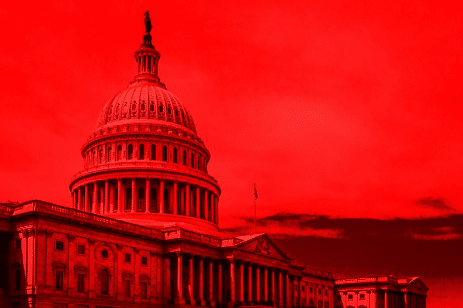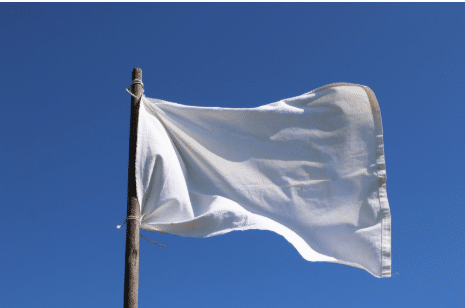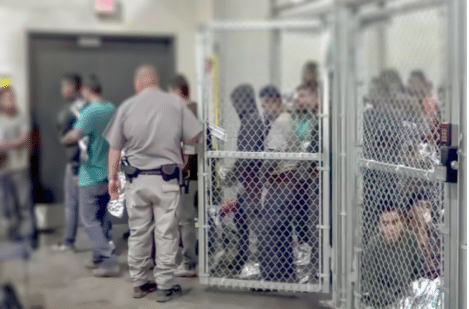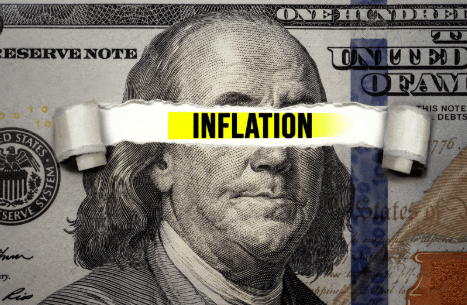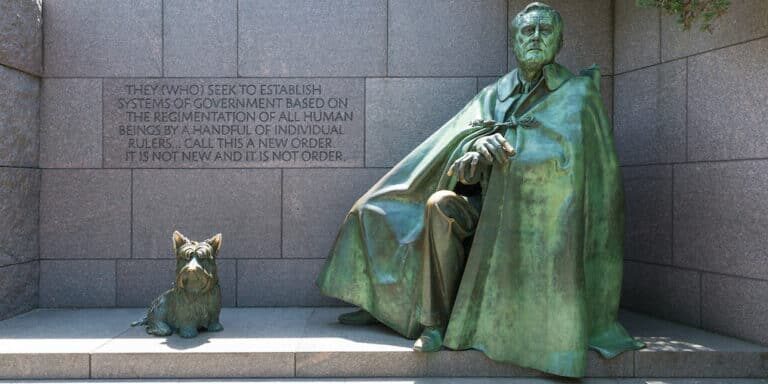
Did FDR Confiscate Gold From Americans In 1933?
President Franklin Delano Roosevelt’s 1933 executive order outlawing the private ownership of gold in the United States was arguably unconstitutional. But why did he do it? Many historians and economists point to efforts to get the economy moving again as the reason, the theory being people were hoarding gold and the velocity of money in circulation needed to be sped up. But the real reason for the gold confiscation was a bailout of the privately-controlled Federal Reserve Bank.
Paper Replaces Specie
During the 1800s, paper money was suspect in the eyes of many. Nobody would ever choose a government-issue $20 note over a $20 gold coin. Gradually during the late 1800s and early 1900s, confidence in government paper money increased to the point where it was widely accepted. People accepted the money because they felt confident they could exchange it at the US Treasury or any Federal Reserve Bank for gold at any time - it even said so on the notes. Without the gold exchange clauses printed directly on the notes, the public would have been much less likely to accept them. Silver Certificates and the United States Notes circulated alongside Gold Certificates, which were legally interchangeable-for-dollar.
The Fed And Easy Money
In 1913 the Federal Reserve Bank was established and it began issuing Federal Reserve Notes the following year. Once free of the restrictions imposed by the limitations of available physical gold for coinage, the number of Dollars in circulation increased dramatically. The increase was mostly in the form of paper money, not specie.
The result was an economic “boom”, also known as “The Roaring Twenties” (1923-1929). But like all artificially-induced stimuli, it came to a crash in the fall of 1929. The burden of over-extended credit was the culprit. Prior to the formation of the Federal Reserve, money in circulation consisted of copper, silver, and gold coins, United States Notes, Silver Certificates, and Gold Certificates. All of these were non-interest-bearing, were issued directly by the US Treasury, and did not have any debt associated with their issuance.
Notes issued by the Federal Reserve, however, were generally lent out, with interest due. So for every Federal Reserve dollar in circulation, somebody needed that dollar to pay off a debt. During the Roaring Twenties, a lot of people took on debt, resulting in a great credit expansion. When only physical gold and silver were used as money, institutions were very cautious about lending it out because if the debtor defaulted, the creditor would be out some serious (sound) money.
But with the advent of Federal Reserve Notes, the bank was willing to lend. And with easier qualification terms, people stepped up to the window. The increased willingness to lend was due to the fact that the item being lent out was just a piece of replaceable paper, not a hard-to-get piece of gold. Sure, the notes said “redeemable in gold” (otherwise they might have been refused in commerce). But few members of the public actually exchanged such notes for actual gold. And thus, the Federal Reserve was free to lend almost at will, with little regard for loan losses. When the interest burden of all that new credit began to weigh more heavily on the general economy, the inevitable credit contraction led to the Stock Market Crash and the Great Depression. Everyone was suddenly reluctant to borrow, banks were reluctant to lend, and the velocity of money in circulation slowed to a crawl.
A Gold Run?
The financial footing of the United States became shaky. European countries that were holding substantial quantities of US gold-clause notes began presenting them to exchange for physical gold. The US Government’s fixed price of gold at $20.67 per troy ounce had been in effect for some time. But as the Great Depression deepened, the free-market price of gold started creeping up above that. This was an indication that confidence in gold-clause notes was starting to wane. A gold run on the Federal Reserve bank was imminent. And that was something that could not be tolerated.
And the reason that a gold run couldn’t be tolerated, is that neither the Federal Reserve nor the US Treasury held anywhere enough gold to back all the Gold Certificates and Federal Reserve Notes that were in circulation. And printing more of these notes would only erode confidence in them even further. The gold fractional-reserve system was at the end of the road.
How Many Gold-Clause Notes In Circulation?
Proof that the Federal Reserve Bank and the US Treasury were in serious trouble, that they didn’t have nearly enough gold to back the notes issued was calculated. The total numbers of various notes are available from a number of sources. Data were reported in two books: “The Standard Handbook of United States Paper Money”, 6th edition (1977), by Chuck O’Donnell and “The Comprehensive Catalog of U.S. Paper Money”, 1981 edition, by Gene Hessler.
To calculate the total face value of all gold-clause notes in circulation, it is necessary to know how many were issued, and how many may have still been around in 1933. The appendix tables do not include US Treasury Gold Certificates issued prior to 1905. Quantities of pre-1905 Gold Certificates were relatively small, and most would have been redeemed (and replaced with new notes) before 1933. The number of notes issued is known. The number surviving in 1933 can only be estimated.
According to the US Treasury, the average lifespan of a current $100 bill in circulation is about 7.5 years. Adjusted for inflation, one hundred 2011 Dollars is roughly five 1933 Dollars. Five Dollars in 1933 was a fair amount of money. The velocity of money in circulation was much lower then as well, especially during the Great Depression. A person receiving a $5 bill in change in 1933 would be unlikely to wad it up and casually stuff it in their pocket. They would more likely carefully squirrel it away for some other “rainy day”. So in 1933, a typical $5 bill would not get worn out as fast as a 2011 $100 bill. And larger denomination notes would circulate even less often.
Gold-clause notes would likely be the most tightly held (and least circulated) of all types of notes, followed by Silver Certificates and the money supply of US Notes (in that order) by U.S. citizens. So it is probably a fair assumption that, on average, the “half-life” of gold-clause notes in circulation would be at least 20 years - meaning that every 20 years or so, half the notes remaining in circulation would be at least 20 years - meaning that after every 20 years or so, half the notes remaining in circulation would have to be replaced due to being worn out. The majority of gold-clause notes were issued shortly before 1933 during the 1928-1933 period, so they would still be in relatively new condition in 1933.
All of this doesn’t account for gold-clause notes that were turned in for physical gold as precious metals, even though they may have still been in good condition. But if Federal Reserve Notes were turned in while still in good condition, the notes would simply be placed back into circulation by the Federal Reserve Bank or US Treasury. Many US Treasury Gold Certificates turned in for redemption may have actually been canceled and not re-released into circulation.
Gold Shortfall
Records indicate that the total gold reserves of the country in 1933 were 4 billion dollars worth. And at $20.67 per troy ounce, that equates to about 6,000 metric tons of gold.
The total face of US Treasury Gold Certificates issued from 1905 to 1928 equates to more than 16,000 metric tons of gold. Taking the generous assumption that the US Treasury did not issue more Gold Certificates than they had their own gold to back them, would mean that only 37.5% of all 1905-1928 Gold Certificates were still outstanding in 1933. In other words, 37.5% of all Gold Certificates were still outstanding in 1933, the US Treasury would have just enough gold to back them.
Now the real problem is the gold-clause Federal Reserve Notes. Since these were generally re-released upon redemption (if in good condition), the only attrition in the number of notes outstanding would be due to the replacement or worn-out notes. A conservative estimate of the total number of Federal Reserve Notes still in circulation would be at least 75%.
The total face value of gold-clause Federal Reserve Notes issued prior to 1933 as a new deal was equivalent to 54,000 metric tons of gold. If 75% of them were outstanding in 1933, that would still be 40,500 metric tons of gold that the Federal Reserve Bank (and the US Treasury) didn’t have. Even taking the extremely low estimate of only 37.5% of the Federal Reserve Notes remaining, that would still be over 20,000 metric tons of gold. With US gold reserves at 6,000 tons, this would be a shortfall of 14,000 tons. But those 6,000 tons were needed to cover the US Treasury Gold Certificates. So at the very minimum, Federal Reserve Notes to the tune of 20,000 metric tons of gold were “circulating naked” in 1933.
Approximately 7 billion dollars of these gold bonds were outstanding in 1933. But the total face value of every gold coin ever minted by the US Government totaled only about 2.3 billion dollars. This means that even if the US Government still had every single gold coin it had ever minted, that amount would still only be able to cover about one-third of the Fourth Liberty Loan gold bonds that were outstanding in 1933. And, of course, the vast majority of these gold coins were held outside the US Government.
The Bailout
So along comes the FDR. One of the very first things he did was issue an executive order basically outlawing the ownership of gold bullion as a national emergency. US Treasury Gold Certificates were no longer legal tender when held by the general public unless exchanged at the US Treasury or Federal Reserve Bank for other non-gold paper at the value of the dollar. The US Treasury could then transfer 6,000 metric tons of gold standard to the Federal Reserve as a token backing for the “full faith and credit of the United States” under the Federal Government.
Reportedly, the US Treasury sent gold certificates to the Federal Reserve in exchange for Federal Reserve Notes. So the net result of this exchange was that the privately-controlled Federal Reserve Bank held US Treasury Gold Certificates backed by US Treasury gold, while the US Treasury held Federal Reserve Notes backed by “credit” and devaluation. These actions bailed out the privately-controlled Federal Reserve Bank, which as of 1933 would no longer be in danger of collapsing due to a short-fall of 20,000 or more metric tons of gold.
During a “Fireside Chat” on 07 May 1933, President Franklin D. Roosevelt basically admitted that gold-clause obligations far exceeded the amount of gold held by the US Treasury and Federal Reserve. In fact, the total gold obligations far exceeded the amount of gold in the entire world, not even counting corporate gold obligations. “Behind government currency, we have, in addition to the promise to pay, a reserve of gold and a small reserve of silver, neither of them anything like the total amount of the currency.” - Frederick Delano Roosevelt, 07 May 1933.
In the same speech, Roosevelt the President of the United States outlined that the total US gold reserves amounted to between 3 and 4 billion dollars worth (4,500-6,000 metric tons) and that all the gold in the world at the foreign exchange was valued at 11 billion dollars (16,500 tons). At the same time, Roosevelt admits that US Government (and Federal Reserve) gold obligations were at least 30 billion dollars worth (45,000 metric tons) and that private US corporations had promised another 60 billion dollars worth (90,000 metric tons).
As citizens complied with the new law by turning in gold, the gold reserves of the US Treasury and Federal Reserve increased. After most of the public’s gold was turned in, FDR raised the official prices from $20.67 to $35.00 per troy ounce. Gold-cause Federal Reserve notes were not recalled and remained in circulation. But they could no longer be exchanged for gold, except by certain foreign central banks. Those with connections were able to buy valuable assets with mere paper. Wealth was concentrated in fewer hands.
The US Government also essentially defaulted on the Fourth Liberty Loan gold bonds. The bondholders had loaned money to the US Government on the basis of being paid back in gold at the rate of $20.67 per troy ounce. But when FDR revalued gold to $35 per troy ounce, the 7 billion dollars in outstanding Liberty Loan gold bonds were instantly diluted by 41%. This was equivalent to an aggregate loss of 139 million troy ounces of gold (4,325 metric tons), from the point of view of the bondholders.
But negating gold obligations and confiscating gold wasn’t enough. The people and entities responsible for this fiasco were concerned that the public would reject the new un-backed paper money and continue the bank runs by switching to silver bullion. A silver confiscation and a recall of currently-circulating silver coins were unworkable since it would be disastrous for commerce. The solution was two-fold: end the minting of silver dollars; and impose a “Silver Tax”. Any entity that made a profit on the transfer of silver bullion, had to pay a full 50% of that profit as tax. The Silver Tax Act was imposed in 1934 and lasted until 1963.
Another Gold Confiscation?
The credit contraction which started in 2008 has many similarities to 1929. But this time, there is no gold limitation constraining the printing presses. Some people believe that another gold confiscation is a very real possibility. But the major difference between now and 1933 is that in 1933 the Federal Reserve owed a lot of gold that it didn’t have. Today the only backing for the US Dollar is the “full faith and credit” of the United States. Government debts, domestic and international, can now only be paid with nothing more than newly-printed paper. The liabilities of the Federal Reserve Bank are no longer denominated in gold, and they haven’t been since Richard Nixon closed the international dollar-gold exchange window in 1971.
Understanding The Gold Reserve Act Of 1934
The Gold Reserve Act of 1934 was the culmination of emergency executive measures and banking laws passed under Franklin Roosevelt in his famous first 100 days in office. In March and April of 1933, Roosevelt had declared a national bank holiday to stem a run on the banks and passed the Emergency Banking Act of 1933 that allowed the recapitalization of banks by the Federal Reserve Bank.
On April 5, 1993, Roosevelt issued Executive Order 6102, “forbidding the hoarding of gold coin, gold bullion, and gold certificates within the continental United States.” The order required all persons, businesses, and banks to deliver their gold and gold certificates to the Federal Reserve in exchange for $20.67. This made the trade and possession of gold more than $100 a criminal offense. The Gold Reserve Act of 1934 completed the transfer of gold from private hands to the US Treasury by requiring the Federal Reserve and all private persons and entities to remit gold over the value of $100 to the government.
The financial market is crumbling and EVERYONE will be affected. Only those who know what's going on and PREPARE will survive... dare we say thrive. Our 7 Simple Action Items to Protect Your Bank Account will give you the tools you need to make informed decisions to protect yourself and the ones you love.





